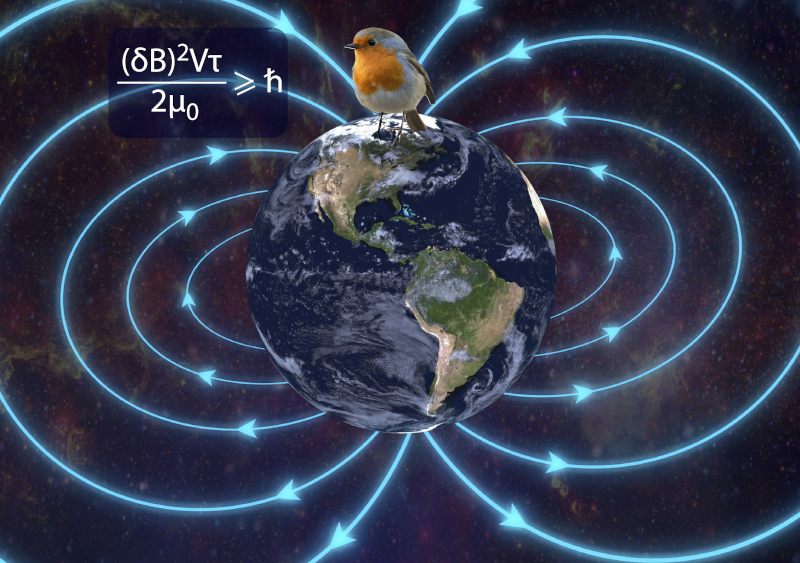In two papers published in Physical Review Letters and PRX Life, Efthimis Gkoudinakis, a 3rd year undergraduate student of our Department, and Iannis Kominis report progress in understanding the fundamental limit to the magnetic sensitivity of magnetometers developed by quantum technologies, and those developed by nature.
Specifically, quantum scientists have over several years tried to understand which is the fundamental limit to magnetometer sensitivity set by quantum physics. There are many types of magnetometers, like those working with alkali-metal vapors (on which the group of I. Kominis is also working on), those that work with nitrogen vacancies in diamond, superconducting sensors (SQUIDs), and several others. For any sensor technology, the relevant physical principles are used to understand the fundamental magnetic sensitivity, so that one can figure out how much room there is for improvement, and thus develop new applications. This program is still ongoing, because there are new questions continuously coming up and new methods of approach of rather subtle processes in open multi-body quantum systems.
But for the superconducting and the atomic sensors in particular, it was noticed about 40 and 20 years ago, respectively, that a quantity connecting magnetic sensitivity with volume of the sensor and measurement time, which quantity has unit of action, is roughly equal to Planck’s constant. This quantity is called energy resolution per bandwidth (for short energy resolution), and provided another perspective for understanding the fundamentals of magnetometry. The fact that its numerical value coincided with Plack’s constant hinted to some fundamental principle behind, by it was not possible to actually find such a principle. These observations were generalized in 2020 when a meta-analysis of tens of experimental realizations of magnetometers was published, showing that the energy resolution of all is larger or equal to Planck’s constant, again without resolving this observation from first-principles.

Paper [1] presents the first such explanation of those observations from first principles, making use of quantum thermodynamic concepts. It is shown that the thermodynamic work exchanged between magnetic sensor and magnetic field during a quantum measurement leads to magnetic field fluctuations consistent with the energy resolution limit. Thus, a new perspective is introduced for understanding the fundamental workings of many magnetic sensing technologies, which is expected to boost the development of even more sensitive devices.
Apparently, humans are not the first to develop magnetometers. Nature has developed biological magnetometers, which aid several species in navigating through the geomagnetic field. During the last six decades scientists have considered several biophysical mechanisms explaining biological magnetoreception, which are not yet fully understood, and the relevant physical parameters not precisely known. In paper [2] the energy resolution limit is used in reverse: since biological magnetometers abide by the laws of physics, and are thus expected to also satisfy the aforementioned bound, the bound is used to constrain those biophysical parameters. Thus, biologists, chemists and physicists working on biological magnetometers will have useful constraints at hand to use in their models and analysis of experimental data. Moreover, we learn how close biological magnetometers are to the quantum limit. Even if they are away from the quantum limit, we learn how much room there is for improvement. One could realize this improvement with biomimetic quantum technology, opening up numerous possible applications in biology and medicine. Paper [2] was selected by the Editors to feature in APS Physics.
Scientific Papers
[1] I. K. Kominis, Quantum thermodynamic derivation of the energy resolution limit in magnetometry, Physical Review Letters 133, 263201 (2024).
[2] I. K. Kominis and E. Gkoudinakis, Approaching the Quantum Limit of Energy Resolution in Animal Magnetoreception, PRX Life 3, 013004 (2025).




